In the American city of Philadelphia, Pennsylvania, there is a very unusual monument at the intersection of 16th and Vine Streets. It is called Freedom. This is one of the most famous works of the famous American sculptor Zenos Frudakis. Learn more at philadelphia-future.
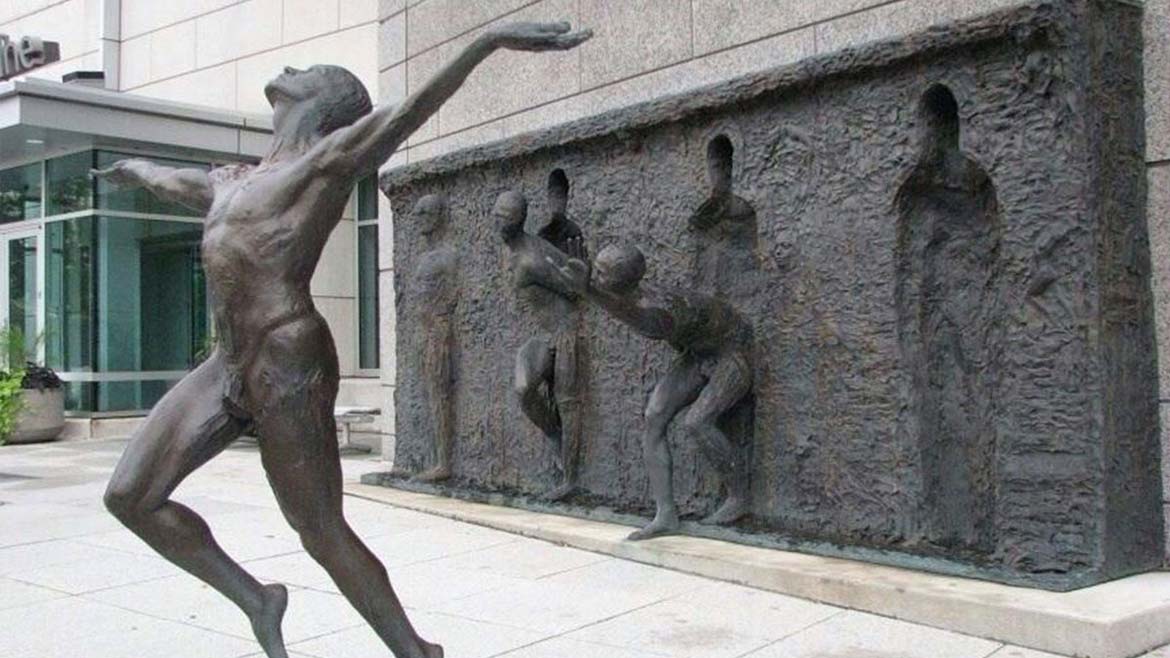
From mummy and rebellious slave to coveted freedom
This sculpture is truly extraordinary and endowed with a very deep meaning. It has four main components that smoothly transfer the observer’s gaze from one to another. These are the figures of four people who are in different positions but connected by a “chain” of common meaning.
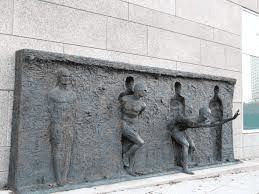
The first human figure on the left seems to be firmly embedded in the stone wall. It seems to be a prisoner of the surroundings, like a motionless mummy, who has no hope for freedom.
The next figure shows the first efforts of the struggle for freedom and its first result, a partial separation from the wall. The figure reminds connoisseurs of the sculptural art of The Rebellious Slave sculpture by the Italian sculptor and artist Michelangelo Buonarroti.
The third figure has almost gained freedom, but it still has to make an effort to “break” the bond completely. Very little separates it from the coveted freedom.
And finally, figure four! It is finally freed and fully feels the freedom. It rushes forward on the wave of such long-awaited emotions! With spread arms, straightened-up posture and raised face, it moves on to happiness and the joy of freedom, with a huge relief from the fact that it has removed the heavy bonds!
Each component of this architectural ensemble carries a very powerful meaningful message and evokes associations with reality in the one who contemplates them thoughtfully.
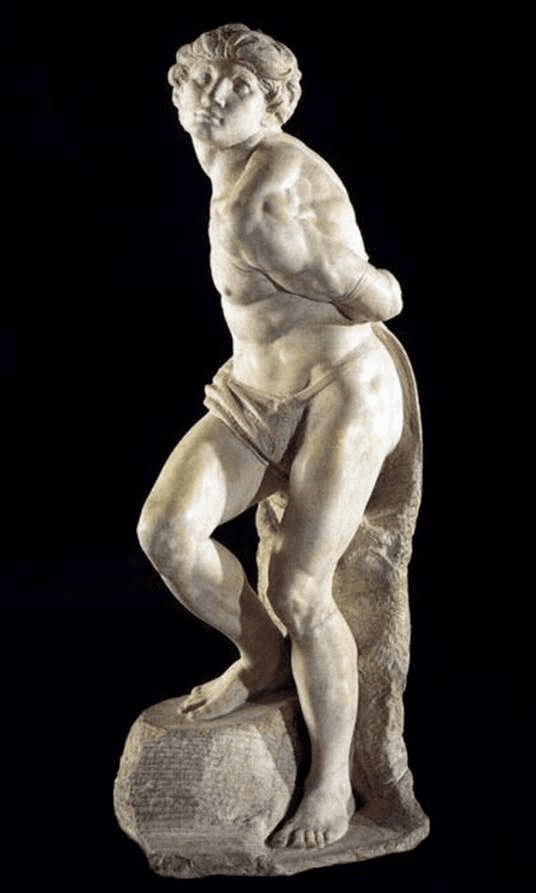
The Rebellious Slave by the sculptor and artist Michelangelo Buonarroti
Every person who looks at this incredible piece of architecture can realize at what stage of freedom they personally are at the moment. The sculptor left a motivational inscription “Stand here” by the fourth freed figure. He urges contemporaries to strive for freedom as much as possible. Anyone willing can stand in an empty niche, feeling like a part of the sculpture, feeling like someone who overcomes a difficult path to freedom and seeing someone in front of them who, despite all the obstacles, has managed to break free. This is very motivating!
Other important details
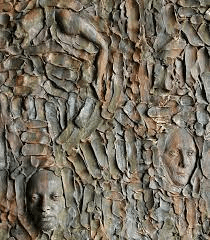
In addition to the four central bronze figures, the sculpture has many other elements worthy of attention. Therefore, we should look closely at the wall. Among other things, you can notice many of the author’s personal and close elements on it. Those are the face and hands of the architect Zenos Frudakis, the faces of the sculptor’s father and mother, his tool and the artist’s cat peeking out from the wall, which lived for 20 years. There are many other interesting elements, such as various figures, portraits, reliefs and partially sculpted body parts, which demonstrate the actual process of creation. Here, we can also see coins that have a double meaning. First, they hint that art and money are connected, and secondly, the bronze coins are encrypted with the date of author’s birth (07.07.51): that is, five and two pennies forming the number 7 and two quarters and a penny — 51.
The back surface of the wall (which is not visible in the current installation) has elements that the author calls the Other Side of Freedom. It consists of mummified forms and resembles a tomb.
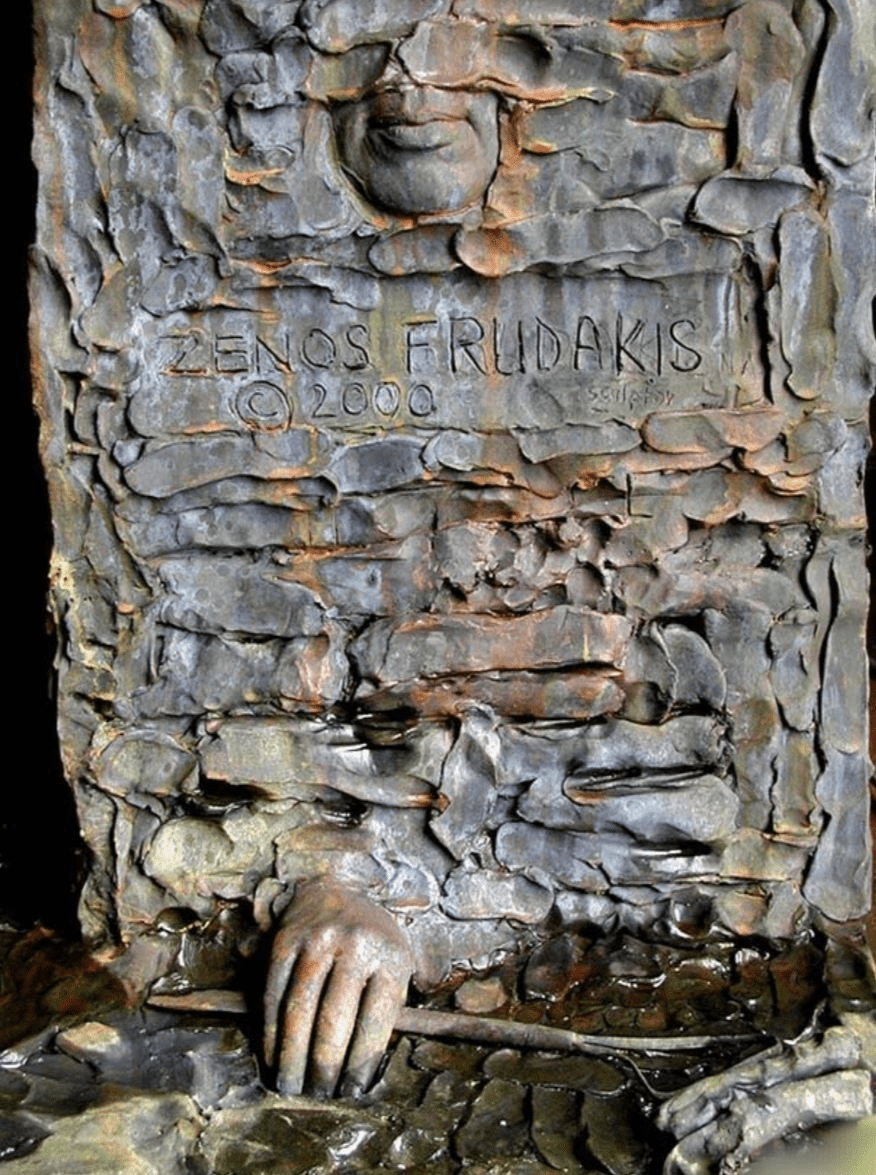
You can endlessly enjoy this unusual, amazing and beautiful monument, which appeared in Philadelphia in 2000. Demonstrating the transformation through to the sequence of four figures at different stages of separation from the wall, the sculpture provokes philosophical reflections. This unsurpassed sculpture proves that you can perfectly convey the freedom of the body and spirit via this kind of art! Even though some people are looking for sculptures that are similar in content, Freedom is truly a unique one. Critics note that the sculpture is supposedly dedicated to the struggle to achieve freedom through the creative process. Even Zenos Frudakis, speaking about his brainchild, emphasized more than once that he wanted to create a sculpture, looking at which every person, regardless of origin, would understand that it is an attempt to break free and that this sculpture symbolized the struggle for freedom through the creative process. However, people who had a chance to observe this architectural beauty saw many more manifestations of freedom in it.
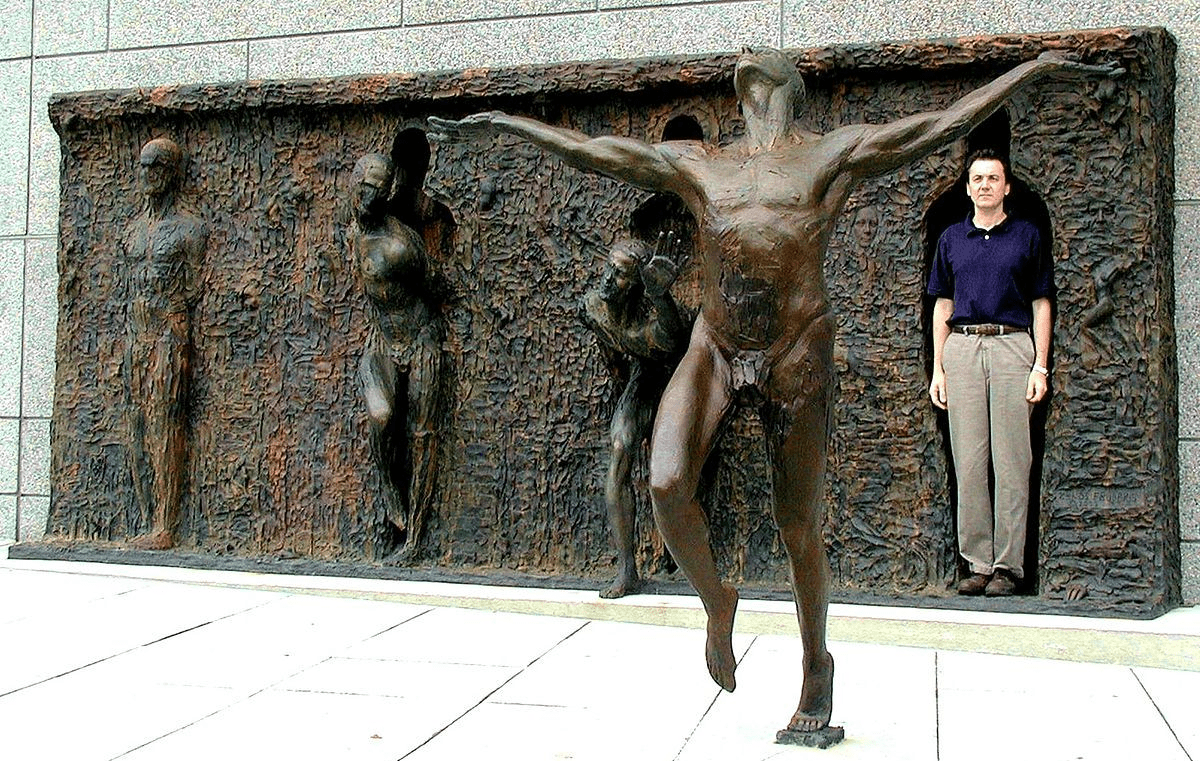
The Freedom sculpture and its author Zenos Frudakis
Briefly about the author
Zenos Frudakis was born in San Francisco, California, in 1951. He became one of five children in a family of Greek and American parents. For the first time, he tried to sculpt as a child, sitting under the family table, from a piece of dough given by his mother, who was busy baking bread. From a young age, Zenos liked to draw and read, he studied art and wanted to be involved in its creation. He had a wide range of interests, primarily related to his creative work. He drew artistic inspiration from the works of ancient Greek sculptors, as well as from Michelangelo Buonarroti, Auguste Rodin, Lorenzo Bernini and Jean-Baptiste Carpeaux. In 1972, Frudakis moved to Philadelphia to study at the Pennsylvania Academy of the Fine Arts (the oldest art school in the United States). At the same time, he studied sculpture privately. Frudakis attended the University of Pennsylvania from 1977 to 1983, earning a BA and MA there. In 1976, Zenos Frudakis married Rosalie Gluchoff. Together, the couple founded the gallery and Frudakis Studio in downtown Philadelphia.
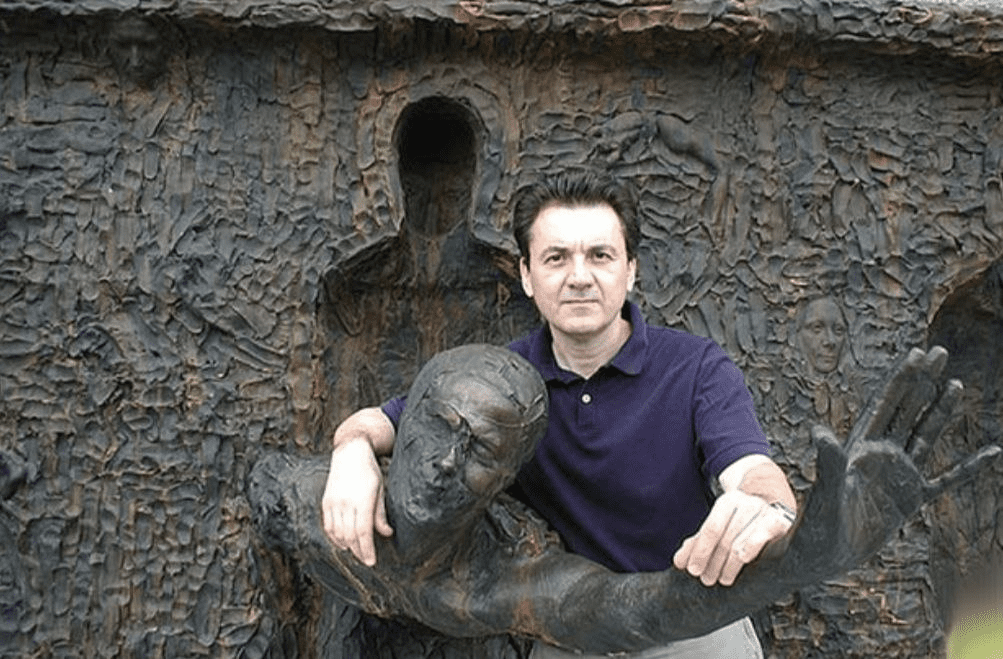
Zenos Frudakis
Zenos Frudakis’s works are very diverse. These are memorials, monuments, portrait busts and statues of modern and historical personalities, military-themed works, sports figures and animal sculptures. They impress with their mood and resemblance to prototypes. Over the past 40 years, the sculptor has created several monumental works and more than a hundred figurative sculptures, which can be found in public and private collections in the United States and other countries. The artist lives and works near Philadelphia. He prefers his ideas to be embodied in bronze, stainless steel and clay. Zenos also likes to experiment with sizes and techniques.
The author’s first significant work was a portrait sculpture of the founder of the American Foundation for Negro Affairs (AFNA), Samuel L. Evans. Then there were the successful portrait sculptures of former Philadelphia Mayor Wilson Goode, the first African-American to serve as Speaker of the Legislative Assembly K. Leroy Irvis and former Philadelphia’s City Council President J.E. Coleman. Frudakis’s work can be found at Arlington National Cemetery in Virginia, Brookgreen Garden in South Carolina, the National Academy of Design, The Lotos Club in New York, the Imperial War Museum in London, the Utsukushigahara Open Air Museum in Japan, the US Embassy in Pretoria, South Africa, and other famous locations. The author presented many successful exhibitions and won awards.
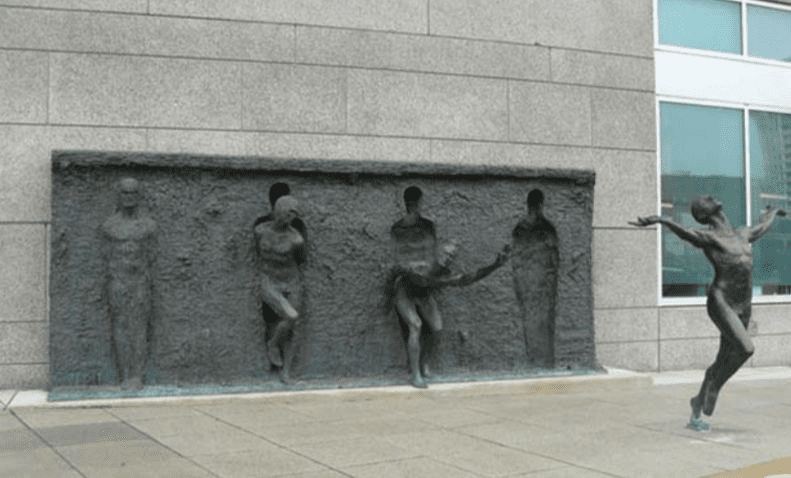
The Freedom sculpture is considered one of the most famous and significant public works of Zenos Frudakis. Measuring 20 feet long and 8 feet high and weighing 7,000 pounds, the monument gives the observer a sense of freedom and excitement as well as invites reflection on the meaning of existence. This is not just a demonstration of the struggle for freedom here and now, it is also a rush to the freedom of immortality. Which figure of the monument resembles you? Maybe you are lucky to associate with the fourth?